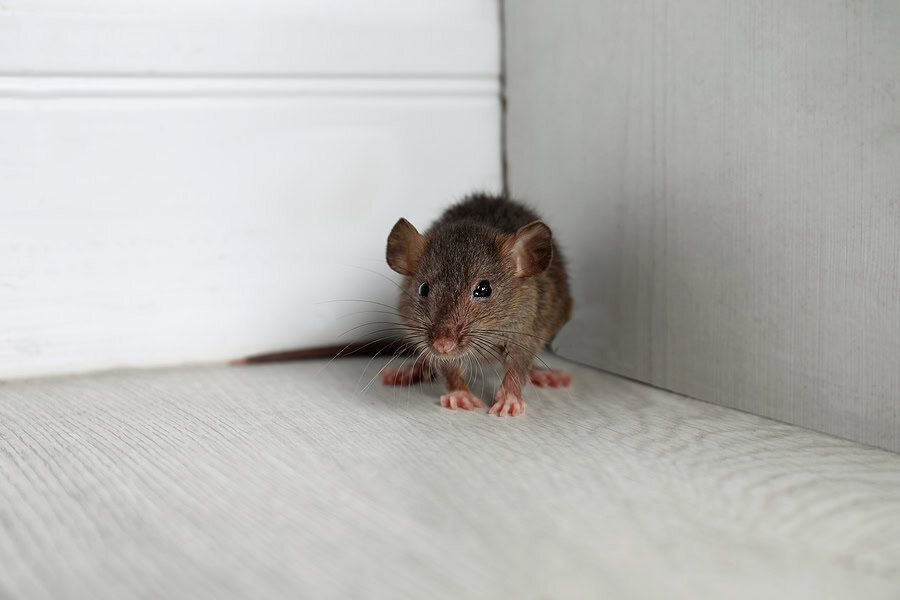
Aug 29, 2024 | DIY Pest Control, Florida Pest Control
Our warm climate attracts several unwanted pests, including rodents like rats and mice! These pests will cause significant damage to your property and pose health risks to your family. Let’s review why you need rodent prevention, how you can prevent them from invading your home and the potential damage they can cause!
Rodent Prevention Guide
How Rodents Can Damage Your Home
Rodents are more than just a nuisance, they will cause serious harm to your property, including:
- Structural Damage: Rats and mice chew through wood, insulation, and electrical wiring, potentially leading to costly repairs and fire hazards.
- Contamination: Rodents will contaminate food and surfaces with their droppings and urine, spreading diseases like Hantavirus and Salmonella.
- Gnawing: Rodents have a constant need to gnaw, often gnawing and damaging our furniture, doors, and personal belongings.
- Nesting: Mice and rats will create nests in walls, attics, and basements, causing insulation damage and increasing the risk of fire.
DIY Rodent Prevention Tips
To keep your Doral home rodent-free, consider these DIY rodent prevention tips:
- Remove potential nesting sites in your yard, including leaf piles and deep mulch.
- Keep your garbage in containers with tight-fitting lids.
- Inspect your home for any openings and seal them using steel wool or metal sheeting.
- Clean up leftover food crumbs and spills after each meal.
- Store food in plastic or glass containers with tight lids.
- Keep your home decluttered by removing old newspapers or magazines and storing items in plastic containers instead of cardboard boxes.
- Eliminate excess water by fixing any pipe leaks and consider enclosing your crawlspace to help minimize moisture and keep pests out.
If you’ve noticed rodent activity on your property, it’s best to call a pest control company near you. These rodent experts will provide your home with a thorough inspection, identify the type of rodent that’s invaded, and provide a rodent control and prevention plan.
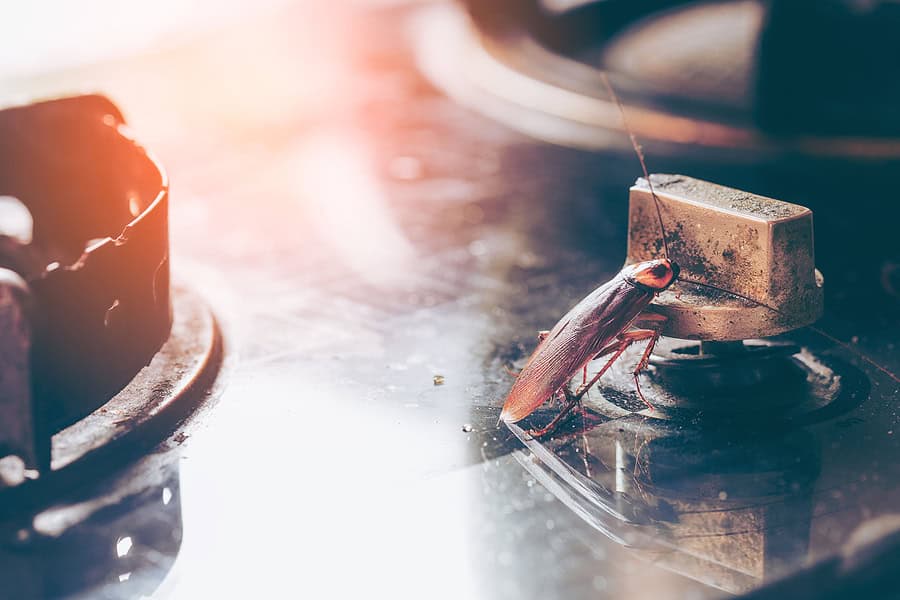
Aug 22, 2024 | DIY Pest Control, Florida Pest Control
Roaches are resistant and highly adaptable pests, skilled at finding their way indoors and multiplying quickly to create an infestation in your home! One of the best ways you can keep a roach-free home is implementing some effective DIY prevention measures! Let’s review the reasons roaches infest and the ways you can deter them from your home.
How to Keep A Roach-Free Home
What Attracts Roaches?
There are several, everyday factors that will attract roaches inside your home, including:
- Food Sources: Cockroaches are drawn to any food source they can find. Crumbs, spills, and even pet food can attract them. They are also known to prefer sugary and starchy foods too.
- Water: To survive, roaches need water and will go looking for it in our kitchens, bathrooms, and crawlspaces. These pests only need a small amount, making leaky pipes and standing water a major attraction.
- Shelter: Roaches seek out dark warm places to hide and breed, like our storage closets. You will often find them in clutter, cardboard boxes, and pules of paper to hide.
How Can I Stop a Roach Infestation?
Roaches contaminate surfaces they touch and can trigger allergies and asthma, so stopping them before they even enter your home is important for the health of your family. Here are some easy, roach prevention tips that every Florida homeowner can utilize:
- Seal Entrances: Ensure all openings in doors, windows, and foundations are sealed. Likewise, replace old weatherstripping and make sure there are no holes in windows or screens to help stop these pests.
- Limit Moisture: Since roaches need water to survive, it’s crucial to remove any standing water throughout your property. Dripping faucets and leaky pipes will attract them inside your home, so look to repair them as soon as possible. Consider enclosing your crawlspace to ensure no moisture is found.
- Declutter Your Home: Cockroaches will find hiding places during the day, but at night emerge to seek out food and water. Decluttering and cleaning out unnecessary items in your home will help limit their hiding spaces and prevent them in the future. Remove any old newspapers, use plastic containers over cardboard, and make sure clothes are not piled on the floor.
- Tidy Your Kitchen: Your kitchen can be a paradise for roaches if it is not pest-proofed! To avoid roaches in your kitchen, clean up any spills or crumbs immediately and regularly take the trash out. When storing food in your pantry, look to use plastic or glass containers with lids on them.
While prevention can help keep cockroaches away, sometimes it’s best to get professional help! Call a pest control company near you to inspect your home and provide you with the best treatment and prevention plan to make sure you have a roach-free home.

Aug 15, 2024 | DIY Pest Control, Florida Termite Control
Drywood termites cause significant damage to homes and structures if left unprotected, causing millions of dollars in repairs. Unlike their counterpart, the subterranean termite, drywood termites live entirely within the wood they infest, making them challenging to control. Luckily, there are several effective drywood termite treatment options available to Florida residents to eliminate and prevent these pests! Let’s explore these treatment options.
Drywood Termite Treatment Options
Fumigation
Fumigation involves tenting an entire structure and utilizing gas to penetrate the wood and eliminate termites. This method can be highly effective at eradicating termites, eliminating any that are present on the property. Fumigation is also known to treat large termite infestations throughout an entire structure. Fumigation does require the occupants to vacate the property for several days.
No-Tent Treatment
Professional termite experts will directly inject an advanced, non-repellent product into drywood termite galleries to eliminate the termites found in a home. The no-tent treatment is slow acting, which allows termites who encounter the product to take it back to the queen and colony to eliminate it. This method is a great alternative to the fumigation method if you would rather avoid leaving your home.
DIY Drywood Termite Prevention Tips
The best way to ensure that you don’t end up with a drywood termite invasion is to deter them away from your home in the first place. Check out our DIY tips to preventing drywood termites:
- Regularly inspect your home for drywood termite signs, such as seeing swarmers, discarded wings on windowsills, damaged wood, and more.
- Seal openings around doors, windows, and utility pipes with sealants as soon as possible to help keep termites and other household pests out.
- Always inspect used furniture and firewood before bringing it inside your home.
- Termite are attracted to light, so make sure to turn any outdoor lights off and close your curtains at night.
While these tips will support efforts to deter termites, if you notice termite activity on your property, it’s best to call a termite control company near you to start termite control treatments and schedule an annual termite inspection to prevent future infestations.
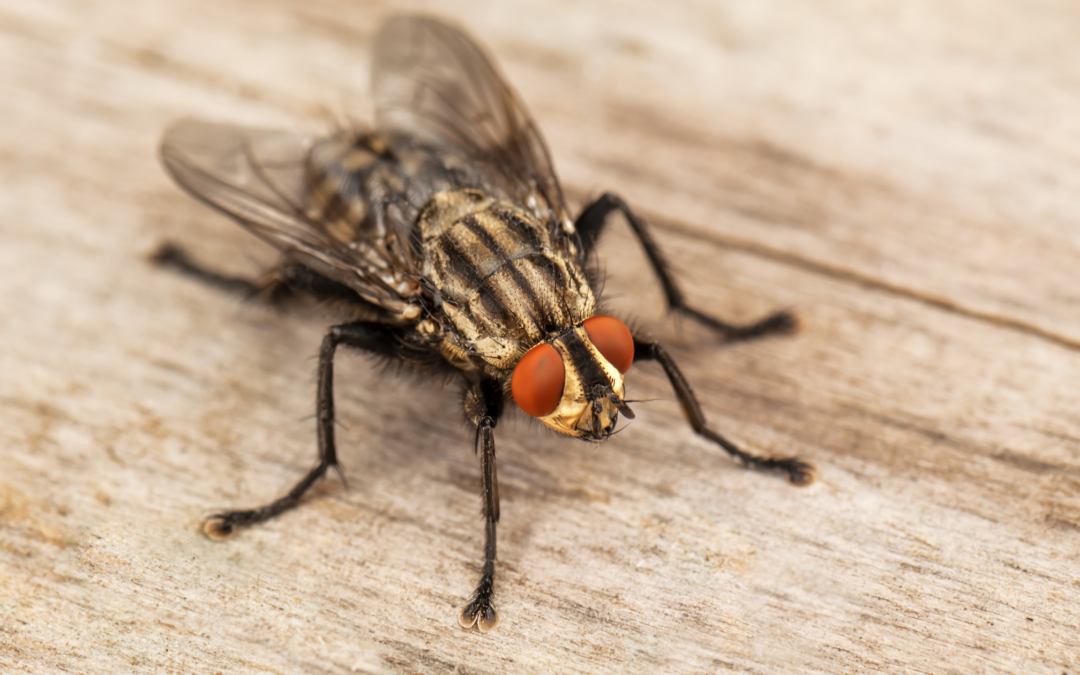
Aug 9, 2024 | DIY Pest Control, Pest Control
House flies are a common nuisance in homes across Georgia, often making their presence known with their incessant buzzing and quick movements. Understanding why these pests enter homes, the risks they pose, and how to prevent them can help you maintain a house fly free environment. This blog will explore the characteristics of house flies, why they infest homes, and effective strategies for keeping them out.
Identifying The House Fly
House flies (Musca domestica) are the most common fly species found in homes. They are medium-sized, typically measuring about 1/4 inch long. House flies have gray or black bodies with four dark longitudinal stripes on their thorax. Their eyes are notably large and compound, providing them with a wide field of vision. The life cycle of a house fly includes four stages: egg, larva (maggot), pupa, and adult. Under ideal conditions, this cycle can be completed in as little as seven to ten days, allowing large numbers to develop quickly.
Why Do House Flies Get into Homes?
House flies enter homes primarily in search of food, warmth, and breeding sites. They are attracted to a wide variety of organic materials, including food waste, decaying matter, and animal feces. Kitchens, garbage bins, pet areas, and even indoor plants can become attractive breeding sites. Flies are particularly adept at finding tiny openings in windows, doors, and vents, which they use to gain entry.
During cooler months, house flies seek warmth, which makes homes an attractive refuge. They are also drawn to the scent of food and garbage. Poor sanitation and improperly sealed entry points can exacerbate the problem, leading to an infestation.
Risks Posed by House Flies
While house flies may seem harmless, they can pose significant health risks. The house fly is known to carry and transmit a variety of pathogens, including bacteria, viruses, and parasites. House flies can contaminate food and surfaces with these pathogens, leading to illnesses such as food poisoning, dysentery, and respiratory infections. The fact that house flies frequently feed on waste materials further increases the risk of disease transmission.
In addition to health risks, house flies can be a general annoyance. Their presence can be unsettling, and they can quickly multiply, becoming a larger issue if not addressed promptly.
How to Prevent House Flies from Getting into Homes
Preventing house flies from entering your home requires a combination of good sanitation practices, physical barriers, and, if necessary, professional pest control services. Here are some effective strategies:
- Maintain Cleanliness: Keep your home clean, especially in areas where food is prepared and consumed. Wipe down surfaces, clean up spills promptly, and store food in sealed containers. Regularly take out the trash and ensure that garbage bins are covered and cleaned.
- Eliminate Breeding Sites: Remove potential breeding sites by promptly disposing of organic waste. This includes cleaning up after pets and keeping compost piles away from the house. Ensure that drains are clean and not clogged with organic matter.
- Seal Entry Points: Inspect your home for potential entry points. Install screens on windows and doors, and repair any holes or tears in existing screens. Seal gaps around doors, windows, and vents with weatherstripping or caulking.
- Use Fly Traps and Deterrents: Fly traps, sticky tapes, and electronic fly zappers can help reduce the number of flies indoors. Additionally, natural deterrents like essential oils (e.g., lavender, eucalyptus) can be used to repel flies.
- Professional Pest Control: If you are dealing with a severe infestation or recurring fly problems, consider contacting a professional pest control company. They can provide targeted treatments and offer advice on long-term prevention strategies.
House flies are more than just a minor inconvenience; they pose real health risks and can be a persistent problem if not properly managed. By understanding why these pests enter homes and implementing effective prevention measures, you can keep your living space free of flies. Remember, maintaining cleanliness, eliminating breeding sites, and sealing entry points are key steps in preventing a house fly infestation. For more persistent issues, a professional pest control company can offer comprehensive solutions.

Aug 8, 2024 | DIY Pest Control, Fire Ant, Florida Pest Control
Living in Florida offers plenty of sunshine and beaches, but it also means dealing with fire ants. These pests thrive in our humid, warm environment, quickly taking over yards by creating mounds and delivering painful stings. Reducing and preventing fire ant activity is easier than you think. Let’s breakdown everything you need to know about fire ants.
Understanding Fire Ants
Fire ants are known for their painful stings and aggressive behavior if they feel threatened, often stinging multiple times. If stung, these pests will inject venom that causes a burning and itching sensation, and in some cases will cause allergic reactions.
Fire ants can vary in size, ranging from 1/8 to ¼ inch and have reddish-brownish bodies. You’ll often see fire ants building their large, dome-shaped mounds in areas that are open and sunny, such as lawns, pastures, and along roads. These mounds can reach up to 18 inches in height!
Preventing Fire Ants from Your Yard
Deterring fire ants away from your property is the first step to avoiding an infestation. Consider these DIY fire ant prevention tips:
- Keep your lawn maintained by mowing the grass and removing debris regularly to reduce fire ant activity.
- Avoid over-watering your lawn, as fire ants are attracted to moist environments.
- If you’re eating outdoors, make sure to clean up any food crumbs and drink spills as soon as possible.
- If you have fruit trees, make sure to remove any rotten fruit or fruit that has fallen on the ground.
- Repair any leaking faucets, hoses, or irrigation systems in your yard.
- Consider applying insecticide barriers around the perimeter of your property to deter fire ants from entering.
If you’ve spotted one too many fire ant mounds on your property, call a pest control company near you. These experts will provide you with an inspection, fire ant control plan, and prevention tips to avoid an ant infestation in the future.
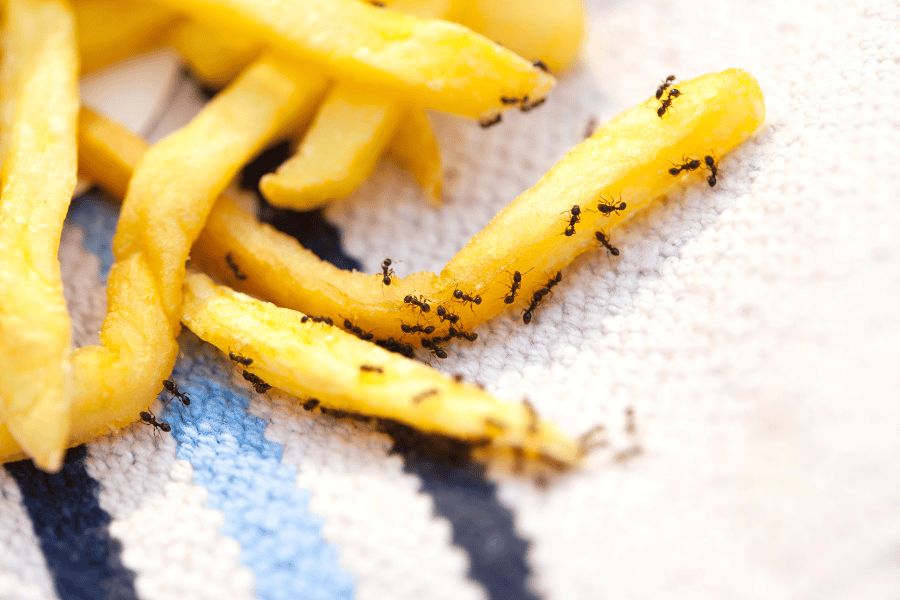
Jul 31, 2024 | DIY Pest Control, Florida Pest Control
Miami’s warm, tropical climate is the perfect paradise for not only humans but pests too! It’s crucial for all Florida homeowners to be vigilant in controlling and preventing common household pests to avoid a full-blown infestation. Check out the common pests you should look out for and our tips on preventing them.
Common Household Pests In Miami
- Cockroaches: These pests are difficult to eliminate, often reproducing very quickly. They thrive in our humid environment and will contaminate food, spread diseases, and trigger allergies.
- Ants: Miami is home to several ant species, including fire ants, carpenter ants, and crazy ants. If these pests invade, they can be challenging to control, especially if they have established their colony in walls, lawns, or kitchens.
- Termites: Subterranean and drywood termites are both common in Florida and are a major concern for homeowners due to their potential to cause extensive structural damage.
- Mosquitoes: Not only a nuisance, but mosquitoes can also transmit diseases like Zika, dengue, and West Nile virus. Peak mosquito season is practically year-round because of our warm climate, creating an ideal breeding ground for them.
- Rodents: Rats and mice are common in urban areas, often causing various problems including damage and health concerns. Once these creatures find an area with an available food source, they will continue to come back for more.
- Spiders: While most spiders in Miami are harmless, like daddy long legs, if they’ve infested your home in numbers, they can quickly become a nuisance.
Pest Prevention Tips for Miami Homeowners
Preventing pests from entering your home is the first step in avoiding an infestation. Here are some effective pest prevention tips:
- Regularly clean your home, especially the kitchen and dining areas.
- Wipe down countertops, sweep floors, and clean up spills as soon as possible.
- Store food in plastic or glass containers with tightly sealed lids.
- Inspect your home for gaps and cracks in walls, windows, and doors.
- Seal any openings with caulk or weather stripping.
- Keep your lawn well-trimmed and free of debris.
- Remove standing water to eliminate mosquito breeding grounds and other common household pests.
- Declutter your home by removing old newspapers and magazines, storing items in plastic storage containers instead of cardboard boxes, and avoiding clothes on the floor.
By implementing and staying informed on common pests in your area, you can keep your home pest-free. If you’ve noticed an influx of the pests mentioned above or would like to get ahead of prevention, it’s always best to call a Miami pest control company near you. These pest control professionals will provide you with a thorough inspection, identify the pest, and recommend the best treatment and prevention plan.
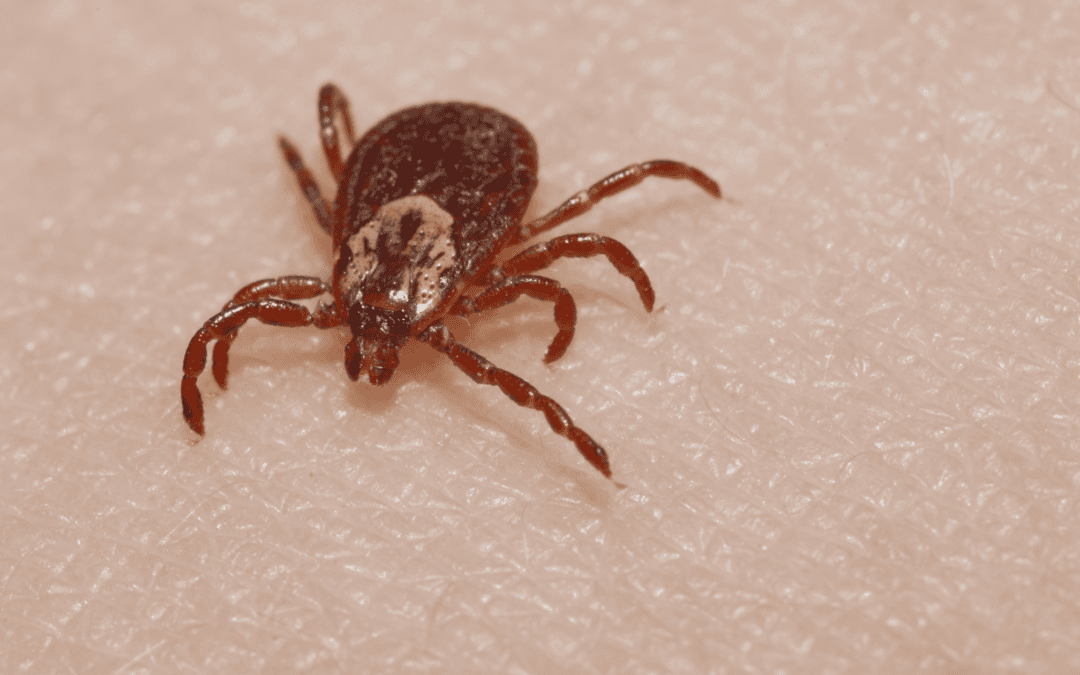
Jul 26, 2024 | DIY Pest Control, Pest Control
Ticks are a common nuisance in Georgia, often found in wooded areas, tall grasses, and even in backyards. These tiny arachnids can latch onto you or your pets and cause a range of health issues. Knowing what to do if you get bitten by a tick is crucial to prevent complications. In this blog, we’ll discuss common types of ticks in Georgia, the diseases they can spread, what to do if you get a tick bite, and preventive measures to keep ticks at bay.
Common Types of Ticks in Georgia
- Blacklegged Tick (Ixodes scapularis): Also known as the deer tick, this type is prevalent in Georgia and is notorious for transmitting Lyme disease.
- Lone Star Tick (Amblyomma americanum): Recognizable by the white dot on the back of adult females, this tick can spread diseases like ehrlichiosis and tularemia.
- American Dog Tick (Dermacentor variabilis): Found in grassy and brushy areas, it is a known carrier of Rocky Mountain spotted fever.
Diseases Spread by Tick Bites
- Lyme Disease: Transmitted primarily by the blacklegged tick, symptoms include fever, headache, fatigue, and a characteristic skin rash called erythema migrans.
- Rocky Mountain Spotted Fever: Spread by the American dog tick, it presents with fever, rash, and sometimes fatal complications if not treated promptly.
- Ehrlichiosis and Tularemia: These diseases can be spread by the lone star tick and cause symptoms like fever, headache, and muscle pain.
What to Do If You Get a Tick Bite
- Remove the Tick Properly:
- Use fine-tipped tweezers to grasp the tick as close to the skin’s surface as possible.
- Pull upward with steady, even pressure. Avoid twisting or jerking the tick, as this can cause the mouth parts to break off and remain in the skin.
- If mouth parts remain in the skin, remove them with tweezers if possible. If not, leave them alone and let the skin heal.
- Clean the Area:
- After removing the tick, thoroughly clean the bite area and your hands with soap and water or rubbing alcohol.
- Monitor for Symptoms:
- Watch for signs of tick-borne illnesses, such as rash, fever, fatigue, and muscle aches. These symptoms can develop days to weeks after a tick bite.
- If you develop a rash or other symptoms, contact your healthcare provider promptly.
- When to Worry About a Tick Bite:
- Seek medical attention if you cannot completely remove the tick, if you develop a rash around the bite site, if you experience flu-like symptoms, or if the bite site becomes red, swollen, and painful.
Preventing Tick Bites When Outdoors
- Wear Protective Clothing: Long sleeves, pants tucked into socks, and light-colored clothing can help you spot ticks more easily.
- Use Tick Repellents: Apply insect repellents that contain DEET, picaridin, or permethrin to clothing and exposed skin.
- Avoid Tick-Prone Areas: Stay on well-trodden paths and avoid tall grass and thick vegetation.
- Check for Ticks Regularly: Perform tick checks after spending time outdoors, especially in high-risk areas. Pay special attention to hidden areas like armpits, behind the knees, and the scalp.
Preventing Ticks on Your Pets
- Use Tick Prevention Products: Consult your veterinarian about tick prevention products for your pets, such as tick collars, topical treatments, and oral medications.
- Check Pets Regularly: Inspect your pets for ticks daily, especially after they’ve been outdoors. Focus on areas around the ears, neck, and between the toes.
- Keep Your Yard Tidy: Maintain your yard by keeping grass short, removing leaf litter, and creating a tick-free zone with wood chips or gravel between wooded areas and your lawn.
- Bathe Pets Frequently: Regular baths can help you spot and remove ticks before they attach to your pet’s skin.
Dealing with ticks can be daunting, but your local pest control company in Georgia is here to help. We offer comprehensive pest control services to protect your home, family, and pets from tick infestations. Our experienced technicians can identify tick hotspots around your property and provide effective treatments to eliminate ticks and prevent future problems.
Ticks are more than just a minor inconvenience—they can pose serious health risks to you and your pets. By understanding the types of ticks common in Georgia, recognizing the diseases they can spread, and knowing what to do if you get bitten, you can take proactive steps to protect yourself and your loved ones. Remember, prevention is key, and regular tick checks combined with pest control services can keep your environment tick-free.
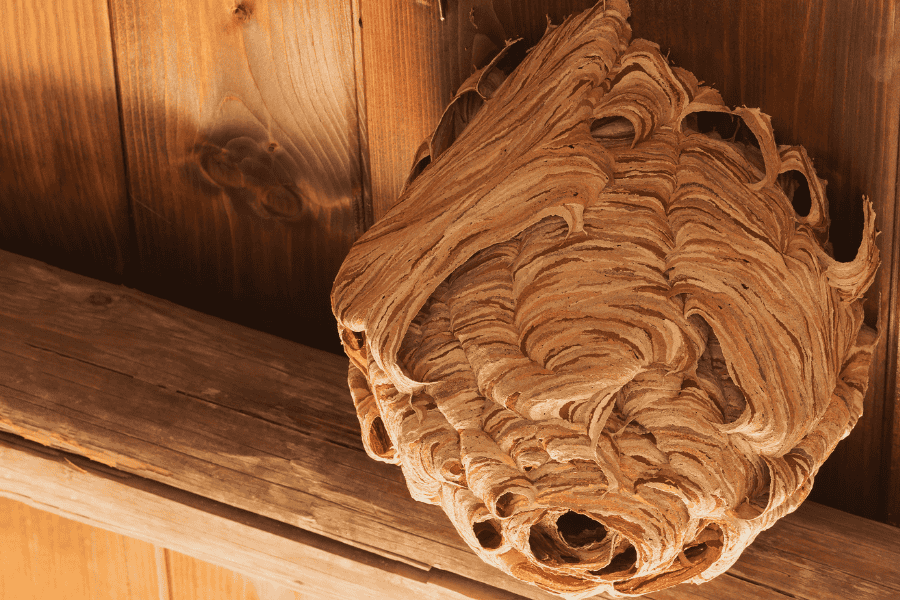
Jul 24, 2024 | DIY Pest Control, Florida Pest Control
Stinging pests, like wasps and hornets, can turn a relaxing afternoon in your yard into a stressful experience! These pests can not only be a nuisance but be a danger to both humans and pets. Let’s dive into how you can prevent wasps and hornets from taking over your yard!
Know Which Stinging Pest
It’s important to understand the difference between wasps and hornets so you can effectively prevent them.
- Wasps: These pests have slender bodies, narrow waists, and long legs. They can have a yellow, black, and even metallic blue body color. They will often build their paper-like nests in sheltered areas like eaves, attics, and trees, though species like yellow jackets love to build their nests underground.
- Hornets: Larger than wasps, hornet bodies can have black and white or black and yellow markings. Hornets also build paper nests, opting to place them high in trees or on buildings.
Both wasp and hornet stings can be very painful and cause similar symptoms, including swelling and pain around the sting site, burning sensation, itchiness, and more.
Preventing Wasps & Hornets
Let’s review the preventative measures to place around your Florida property to avoid stinging pests:
- Seal cracks and gaps in walls, eaves, and around windows to prevent them from getting inside.
- Hornets and wasps are attracted to food sources, so make sure you keep your garbage cans tightly sealed and clean up food and drink spills immediately.
- Both stinging pests are drawn to sweet smells; consider removing fallen fruit from your yard and avoid planting overly fragrant flowers near your home’s entry points.
- Keep your yard tidy by trimming shrubs, mowing the lawn regularly, and removing any debris to reduce potential nesting sites.
If you’ve noticed an influx of stinging pests around your Florida home, it’s best to call a pest control company near you. Removing nests can be extremely dangerous, so it’s always best to leave it to a professional pest control expert who can safely remove the nest and provide you with recommendations on preventing wasps and hornets in the future.

Jul 19, 2024 | DIY Pest Control, Termite Control
Subterranean termites are a significant concern for homeowners in Georgia, causing extensive damage to wooden structures if left untreated. Understanding how to identify these pests, recognizing the signs of an infestation, and knowing the various treatment options available are crucial steps in protecting your home. In this blog, we will explore what subterranean termites look like, the signs of their presence, the best treatments for eliminating them, and essential prevention tips to keep your home termite-free.
What Do Subterranean Termites Look Like?
Subterranean termites are small, creamy-white to dark brown insects, typically about 1/8 to 3/8 inch long. They have soft bodies and are often mistaken for ants, though they can be distinguished by their straight antennae, uniform waists, and wings of equal length when swarming. Identifying these termites correctly is the first step in implementing effective termite control.
Signs of a Subterranean Termite Infestation
Recognizing the signs of a subterranean termite infestation early can save homeowners from extensive and costly repairs. Key indicators include:
- Mud Tubes: Subterranean termites build mud tubes to protect themselves from predators and to maintain a moist environment while traveling between their colony and food sources. These tubes, typically found along foundations, walls, and crawl spaces, are a clear sign of an active infestation.
- Damaged Wood: Termite damage often appears as hollowed-out wood, usually along the grain. Tapping on the wood may produce a hollow sound. You might also notice blistering or darkening of the wood surface.
- Swarmers: Winged termites, or swarmers, are reproductive termites that leave the colony to start new ones. Finding discarded wings around windowsills, doors, or other entry points is a sign that termites are nearby.
- Frass: Termite droppings, known as frass, are tiny, pellet-like substances that termites push out of their tunnels. Finding frass near wooden structures can indicate an infestation.
Best Treatments for Subterranean Termites
There are several effective treatments for subterranean termites, each with its benefits and considerations. Here are the most commonly used methods:
- Liquid Termiticides: Liquid termiticides are applied to the soil around a building’s foundation, creating a barrier that termites cannot cross. This method is highly effective for immediate control and long-term prevention.
- Baiting Systems: Termite baiting systems involve placing bait stations around the perimeter of a home. These stations contain wood or cellulose material treated with a slow-acting insecticide. Termites feed on the bait and carry it back to the colony, eventually leading to the colony’s elimination.
- Foam Treatments: Foam termiticides are injected into wall voids, crawl spaces, and other hard-to-reach areas where termites may be hiding. The foam expands to fill the space, ensuring thorough coverage and effective control.
- Borate Treatments: Borate-based treatments are applied directly to wooden structures. They penetrate the wood and kill termites upon ingestion. This method is often used during the construction phase or for treating exposed wood in existing structures.
Termite Prevention Tips
Preventing subterranean termites from invading your home is crucial. Here are some practical tips to keep these pests at bay:
- Reduce Moisture: Termites thrive in moist environments. Ensure proper drainage around your home, fix leaky pipes and faucets, and use dehumidifiers in basements and crawl spaces.
- Remove Wood-to-Ground Contact: Avoid direct contact between wooden structures and soil. Use concrete or metal barriers between wood and soil to deter termites.
- Seal Cracks and Gaps: Seal any cracks or gaps in your home’s foundation, walls, and roof to prevent termites from gaining entry.
- Store Firewood Properly: Keep firewood, lumber, and other wooden materials at least 20 feet away from your home and elevate them off the ground.
- Regular Inspections: Schedule regular termite inspections with a professional termite control company to catch any signs of infestation early.
Subterranean termites are a serious threat to homes in Georgia, but with the right knowledge and proactive measures, you can protect your property from these destructive pests. Identifying what subterranean termites look like, recognizing the signs of an infestation, and choosing the best treatment method are essential steps in effective termite control. Additionally, implementing preventive measures can help keep your home termite-free. If you suspect a termite infestation, contact a reputable termite control company to conduct a thorough inspection and recommend the best course of action.
By staying vigilant and informed, you can safeguard your home against the costly damage caused by termites.








